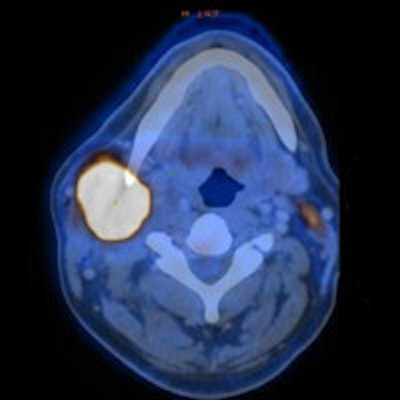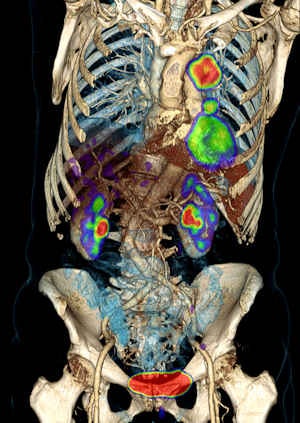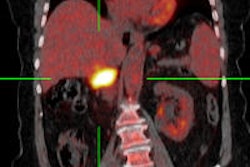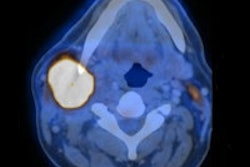
All imaging specialists who are involved in relevant multidisciplinary teams must develop a good working knowledge of PET/CT, and teamwork is essential to ensure the highest standards, according to guidance published this month by the U.K. Royal College of Radiologists (RCR).
"The rapid integration of clinical PET/CT over the past decade has created considerable challenges in developing and maintaining the competencies required for optimal PET/CT interpretation. This remains a particular problem for established practitioners who completed training before the advent of PET/CT," the authors wrote.
 PET/CT can produce stunning images like this one, which was taken on a Biograph mCT system, but the technique raises important training and turf issues that are addressed in the new RCR document. Image courtesy of Siemens Healthcare.
PET/CT can produce stunning images like this one, which was taken on a Biograph mCT system, but the technique raises important training and turf issues that are addressed in the new RCR document. Image courtesy of Siemens Healthcare.The purpose of the new document, "Recent and future PET/CT developments: Guidance on legislative and training aspects for members and Fellows" (Ref No: BFCR[13]3), is to update members and RCR fellows on recent and future developments related to PET/CT, and how these might have an impact on experienced imaging specialists who have limited or no training in the technique, explained Dr. Pete Cavanagh, RCR's vice president, clinical radiology.
Evidence has emerged for a wider range of clinical uses for PET/CT, including pediatric, neurological, and cardiac applications. Also, emerging non-FDG tracers are already in clinical use in Europe, and these developments require careful consideration, the author stated.
In April 2013, PET/CT became the only imaging service in England to be nationally commissioned, following the introduction of specialist commissioning by the National Health Service Commissioning Board. Similar developments in Scotland and Wales have led to greater availability of the technique, following new fixed-site installations in Dundee, Edinburgh, Glasgow, and Cardiff.
For the delivery of a PET/CT service in the U.K., it is an important legal requirement that an Administration of Radioactive Substances Advisory Committee (ARSAC) certificate holder is employed by the hospital group. A radiologist can report without the certificate, but only in agreement with the holder.
According to a world expert in PET/CT who has read the document, nothing strikes him as being new in the report, but it makes entirely reasonable suggestions and useful reading. Also, the Website referenced in the RCR document, PET PROS: PET Professional Resources and Outreach Source, is particularly valuable in this area, and he urges everyone to take full advantage of the site, which can be accessed here.
In 2008, the RCR published "FDG-18 Oncology PET/CT: Guidance for Existing Consultants," which it has now withdrawn. This document provided information for senior radiologists who already had considerable experience in aspects of diagnostic imaging and wished to receive additional training in FDG-18 PET/CT. Since its publication and as a result of the nationally supported PET/CT contract introduced in April 2008, there have been significant developments in the use of PET/CT in the U.K., and its use in oncological practice has now been well established.
For a free download of the full RCR report, click here. Also, this document follows last year's publication, "Evidence-Based Indications for the Use of PET/CT in the United Kingdom 2012," which constituted an up-to-date summary of relevant indications for the use of PET/CT, where there is good evidence that patients will benefit from improved disease assessment resulting in altered management and improved outcomes. The plan is for the Intercollegiate Standing Committee on Nuclear Medicine of the Royal College of Physicians and RCR to update this document annually. To read this document, click here.
Editor's note: The PET/CT image on our home page shows a large lymph node metastasis with high FDG activity in a 56-year-old man with suspected hypopharyngeal cancer and ipsilateral lymph node metastases. Image courtesy of Dr. Patrick Veit-Haibach, University Hospital Zurich.



















